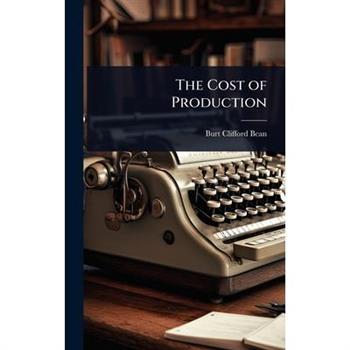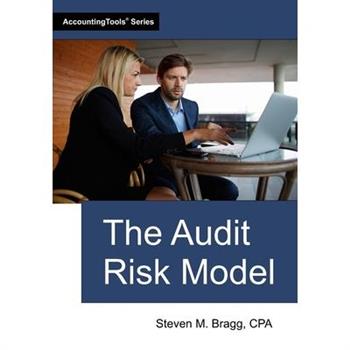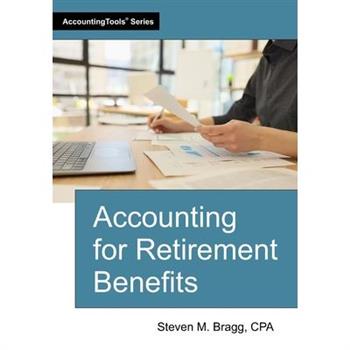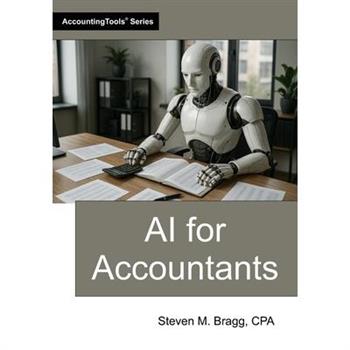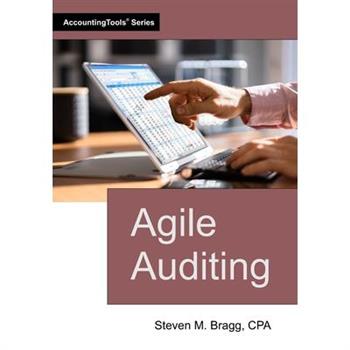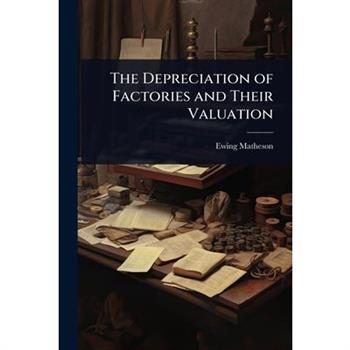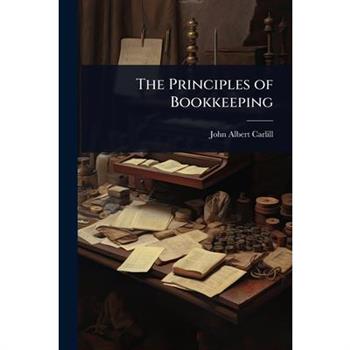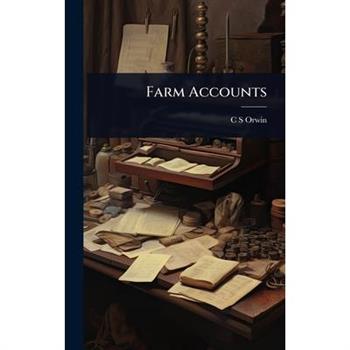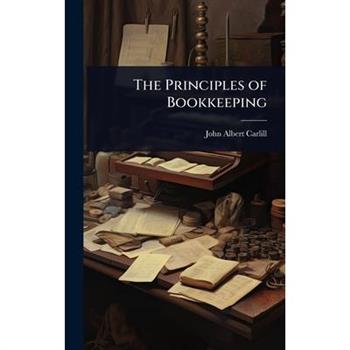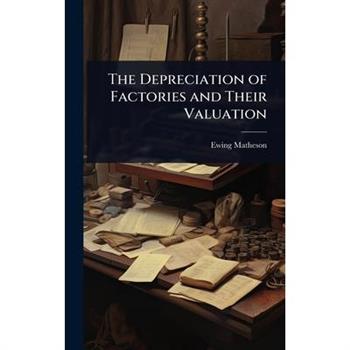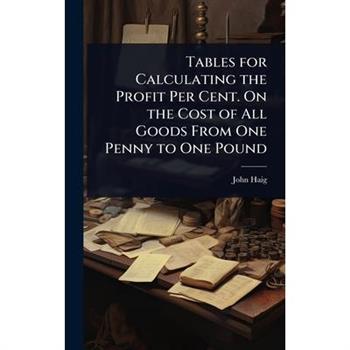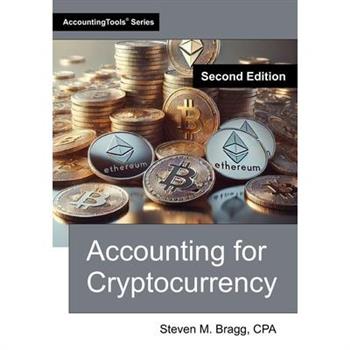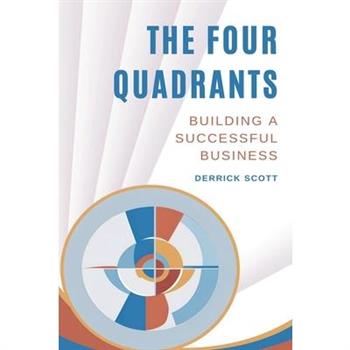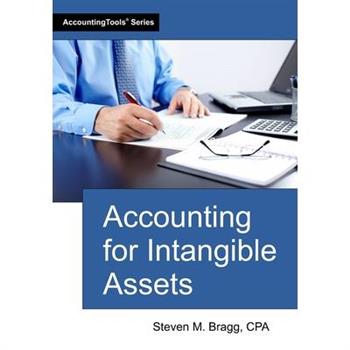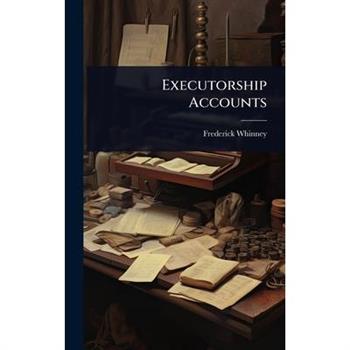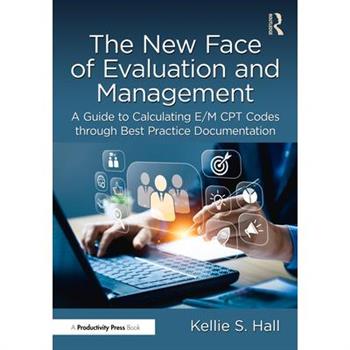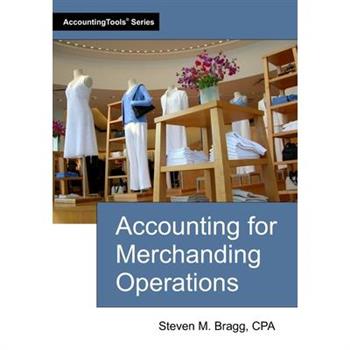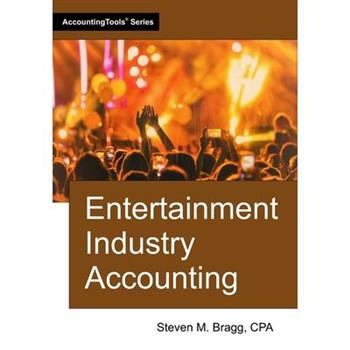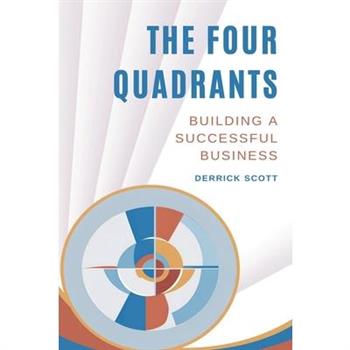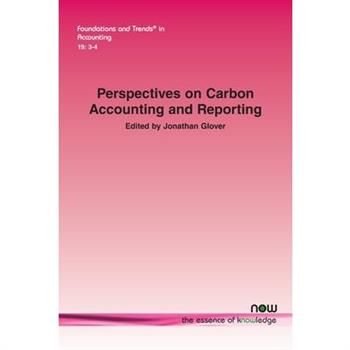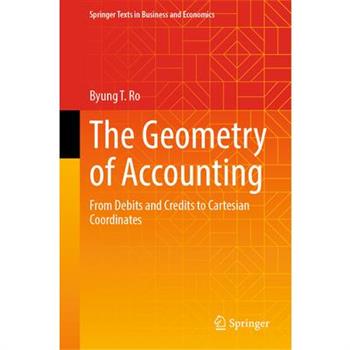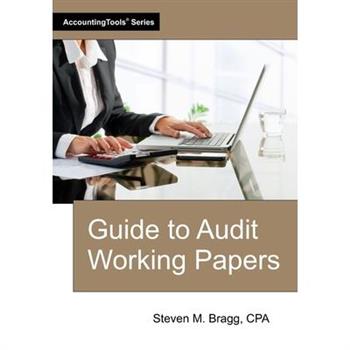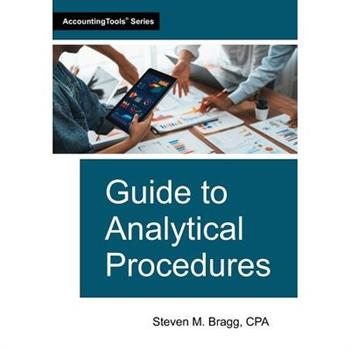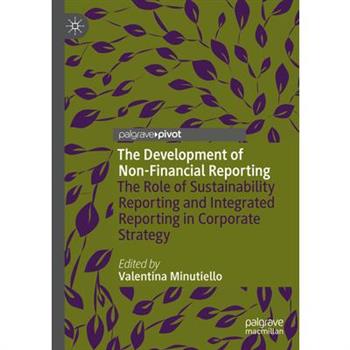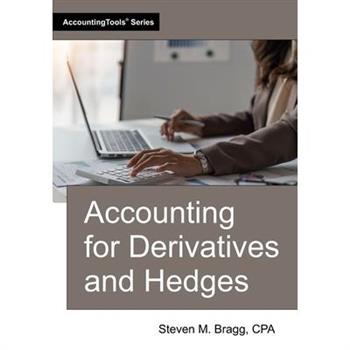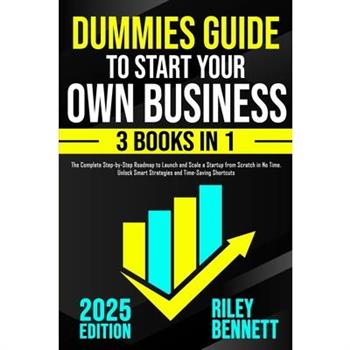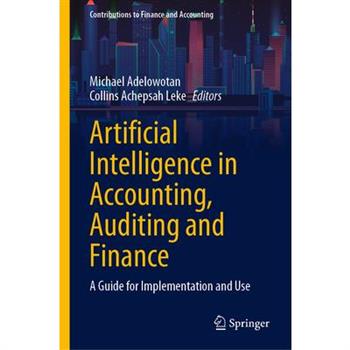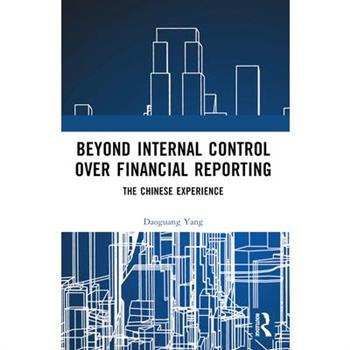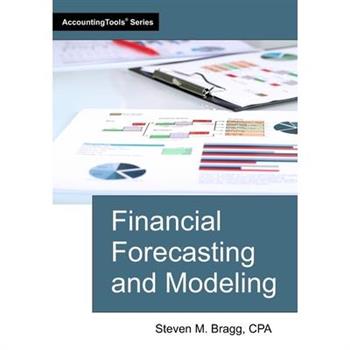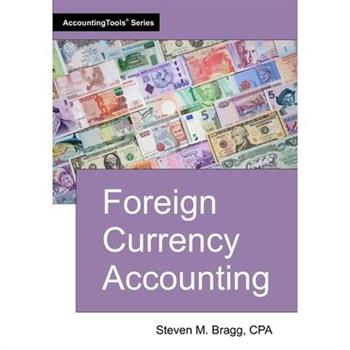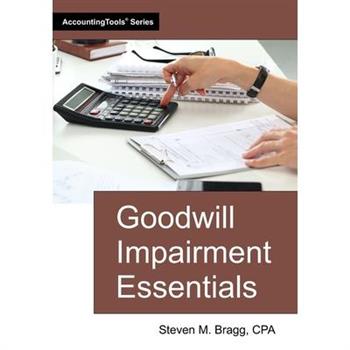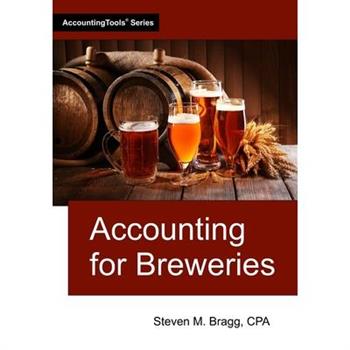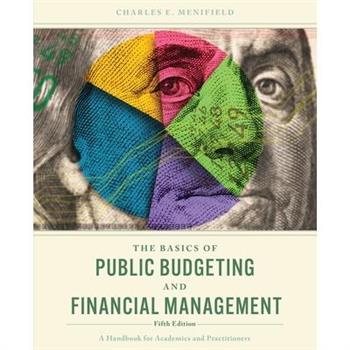Standard Cost Finding Course For Printers
"Standard Cost Finding Course For Printers" offers a comprehensive guide to cost accounting principles specifically tailored for the printing industry. Originally developed by the Department of Education of the United Typothetae of America, this course provides a structured approach to understanding and implementing standard cost accounting methods. The book details essential techniques for printers to accurately determine their production costs, manage expenses, and improve profitability. It covers topics such as materials costing, labor allocation, and overhead application, providing practical insights and methodologies applicable to a wide range of printing operations. This resource is invaluable for both seasoned professionals seeking to refine their cost management strategies and newcomers looking to gain a solid foundation in the financial aspects of printing.This work has been selected by scholars as being culturally important, and is part of the knowledge base of civilization as we know it. This work was reproduced from the original artifact, and remains as true to the original work as possible. Therefore, you will see the original copyright references, library stamps (as most of these works have been housed in our most important libraries around the world), and other notations in the work.This work is in the public domain in the United States of America, and possibly other nations. Within the United States, you may freely copy and distribute this work, as no entity (individual or corporate) has a copyright on the body of the work.As a reproduction of a historical artifact, this work may contain missing or blurred pages, poor pictures, errant marks, etc. Scholars believe, and we concur, that this work is important enough to be preserved, reproduced, and made generally available to the public. We appreciate your support of the preservation process, and thank you for being an important part of keeping this knowledge alive and relevant.
The Cost of Production
The Cost of Production, by Burt Clifford Bean, delves into the science of costs and its practical application across diverse manufacturing sectors. First published in 1905, this foundational work explores the principles underlying cost determination, offering insights into how businesses can accurately assess and manage their production expenses. Featuring illustrative examples from cost experts, the book elucidates various costing methodologies relevant to different lines of manufacturing. It is an invaluable resource for those seeking a comprehensive understanding of cost accounting and its impact on industrial management. This historical work remains relevant for students and professionals interested in the evolution of cost accounting practices and the fundamental concepts that continue to shape modern business strategies.This work has been selected by scholars as being culturally important, and is part of the knowledge base of civilization as we know it. This work was reproduced from the original artifact, and remains as true to the original work as possible. Therefore, you will see the original copyright references, library stamps (as most of these works have been housed in our most important libraries around the world), and other notations in the work.This work is in the public domain in the United States of America, and possibly other nations. Within the United States, you may freely copy and distribute this work, as no entity (individual or corporate) has a copyright on the body of the work.As a reproduction of a historical artifact, this work may contain missing or blurred pages, poor pictures, errant marks, etc. Scholars believe, and we concur, that this work is important enough to be preserved, reproduced, and made generally available to the public. We appreciate your support of the preservation process, and thank you for being an important part of keeping this knowledge alive and relevant.
The Audit Risk Model
Auditors use the audit risk model to determine the total amount of risk associated with an audit. In The Audit Risk Model manual, we describe how this model works and how the auditor can use it to manage audit risk. We note situations in which the model indicates unacceptable audit risk, as well as cases in which expanded audit procedures can overcome these concerns. The manual also addresses the concepts of audit evidence and audit sampling.
Accounting for Retirement Benefits
A business may provide its employees with various benefit plans after they have retired, of which the most common is the pension plan. The accounting for these benefits can appear arcane, especially when a defined benefit plan is involved. In Accounting for Retirement Benefits, we describe the key elements of both defined benefit and defined contribution plans, and how to account for them. The manual also identifies the complete range of disclosures associated with pension plans, which can be quite extensive. In short, Accounting for Retirement Benefits provides the accountant with a solid understanding of the fundamental issues associated with retirement benefits.
Textile Management
This book covers the core principles of managing textiles, covering everything from sourcing and production to distribution and sustainability.
AI for Accountants
The AI for Accountants manual provides accountants with a comprehensive understanding of how artificial intelligence is transforming the accounting industry, as well as how to leverage AI tools and methodologies to enhance decision-making, accounting efficiency, and strategic insights.
Agile Auditing
Internal audits can be ponderous affairs, requiring the use of an extensive audit program, multiple reviews, and the delayed issuance of findings and recommendations. In the Agile Auditing manual, we describe how to avoid these issues by restructuring audit teams, accelerating the audit timeline, including the client in the conduct of audits, paring back workpapers, and focusing on providing a strong value proposition to the client. The net result is a much more effective internal audit department.
Tables for Calculating the Profit Per Cent. On the Cost of All Goods From One Penny to One Pound
"Tables for Calculating the Profit Per Cent. On the Cost of All Goods From One Penny to One Pound" is a practical guide designed to assist merchants, accountants, and business owners in quickly determining profit margins. Authored by John Haig, this book provides comprehensive tables that simplify the process of calculating the percentage of profit on goods ranging in cost from a single penny to one pound.This resource is invaluable for anyone involved in retail, wholesale, or any business where accurate and efficient profit calculation is essential. The detailed tables enable users to instantly find the profit percentage without the need for complex calculations, saving time and reducing the risk of errors. Whether for historical reference or practical application, this book remains a useful tool for understanding basic business finances.This work has been selected by scholars as being culturally important, and is part of the knowledge base of civilization as we know it. This work was reproduced from the original artifact, and remains as true to the original work as possible. Therefore, you will see the original copyright references, library stamps (as most of these works have been housed in our most important libraries around the world), and other notations in the work.This work is in the public domain in the United States of America, and possibly other nations. Within the United States, you may freely copy and distribute this work, as no entity (individual or corporate) has a copyright on the body of the work.As a reproduction of a historical artifact, this work may contain missing or blurred pages, poor pictures, errant marks, etc. Scholars believe, and we concur, that this work is important enough to be preserved, reproduced, and made generally available to the public. We appreciate your support of the preservation process, and thank you for being an important part of keeping this knowledge alive and relevant.
The Depreciation of Factories and Their Valuation
The Depreciation of Factories and Their Valuation, by Ewing Matheson, offers a detailed look into the methods and considerations for assessing the value of industrial facilities in the late 19th century. Originally published in 1884, this work provides insights into the economic practices of the time, focusing on the depreciation of machinery and buildings within a factory setting. Matheson璽€(TM)s work explores various valuation techniques and their application to manufacturing environments.This book serves as a valuable resource for historians of economics, industrial engineers, and anyone interested in the historical perspectives on factory management and accounting practices. It highlights the challenges and methodologies employed in a period of significant industrial growth and technological change.This work has been selected by scholars as being culturally important, and is part of the knowledge base of civilization as we know it. This work was reproduced from the original artifact, and remains as true to the original work as possible. Therefore, you will see the original copyright references, library stamps (as most of these works have been housed in our most important libraries around the world), and other notations in the work.This work is in the public domain in the United States of America, and possibly other nations. Within the United States, you may freely copy and distribute this work, as no entity (individual or corporate) has a copyright on the body of the work.As a reproduction of a historical artifact, this work may contain missing or blurred pages, poor pictures, errant marks, etc. Scholars believe, and we concur, that this work is important enough to be preserved, reproduced, and made generally available to the public. We appreciate your support of the preservation process, and thank you for being an important part of keeping this knowledge alive and relevant.
The Principles of Bookkeeping
The Principles of Bookkeeping, by John Albert Carlill, offers a comprehensive guide to the fundamental concepts and practices of bookkeeping as understood in the late 19th century. This meticulously detailed volume provides clear explanations of essential accounting principles, making it an invaluable resource for students and professionals alike. Carlill's work covers a wide range of topics, including the preparation of financial statements, the management of accounts, and the recording of business transactions. Through practical examples and step-by-step instructions, readers will gain a solid understanding of the techniques used to maintain accurate financial records. Whether you are a novice seeking to learn the basics or an experienced accountant looking to refresh your knowledge, this book provides a timeless foundation in the art of bookkeeping.This work has been selected by scholars as being culturally important, and is part of the knowledge base of civilization as we know it. This work was reproduced from the original artifact, and remains as true to the original work as possible. Therefore, you will see the original copyright references, library stamps (as most of these works have been housed in our most important libraries around the world), and other notations in the work.This work is in the public domain in the United States of America, and possibly other nations. Within the United States, you may freely copy and distribute this work, as no entity (individual or corporate) has a copyright on the body of the work.As a reproduction of a historical artifact, this work may contain missing or blurred pages, poor pictures, errant marks, etc. Scholars believe, and we concur, that this work is important enough to be preserved, reproduced, and made generally available to the public. We appreciate your support of the preservation process, and thank you for being an important part of keeping this knowledge alive and relevant.
Farm Accounts
"Farm Accounts" by C S Orwin, originally published in 1914, offers a detailed guide to the principles and practices of agricultural accounting. This historical text provides insights into the financial management of farms during the early 20th century, making it a valuable resource for those interested in the history of agriculture and farm economics. Orwin's work delves into the specifics of tracking income and expenses, managing assets, and analyzing financial performance in an agricultural setting. While some methods and regulations may be outdated, the core concepts of financial record-keeping and analysis remain relevant. This book serves as a window into the past, illuminating the challenges and strategies employed by farmers in a bygone era. It provides a unique perspective on the evolution of agricultural practices and the importance of sound financial management in farming.This work has been selected by scholars as being culturally important, and is part of the knowledge base of civilization as we know it. This work was reproduced from the original artifact, and remains as true to the original work as possible. Therefore, you will see the original copyright references, library stamps (as most of these works have been housed in our most important libraries around the world), and other notations in the work.This work is in the public domain in the United States of America, and possibly other nations. Within the United States, you may freely copy and distribute this work, as no entity (individual or corporate) has a copyright on the body of the work.As a reproduction of a historical artifact, this work may contain missing or blurred pages, poor pictures, errant marks, etc. Scholars believe, and we concur, that this work is important enough to be preserved, reproduced, and made generally available to the public. We appreciate your support of the preservation process, and thank you for being an important part of keeping this knowledge alive and relevant.
The Principles of Bookkeeping
The Principles of Bookkeeping, by John Albert Carlill, offers a comprehensive guide to the fundamental concepts and practices of bookkeeping as understood in the late 19th century. This meticulously detailed volume provides clear explanations of essential accounting principles, making it an invaluable resource for students and professionals alike. Carlill's work covers a wide range of topics, including the preparation of financial statements, the management of accounts, and the recording of business transactions. Through practical examples and step-by-step instructions, readers will gain a solid understanding of the techniques used to maintain accurate financial records. Whether you are a novice seeking to learn the basics or an experienced accountant looking to refresh your knowledge, this book provides a timeless foundation in the art of bookkeeping.This work has been selected by scholars as being culturally important, and is part of the knowledge base of civilization as we know it. This work was reproduced from the original artifact, and remains as true to the original work as possible. Therefore, you will see the original copyright references, library stamps (as most of these works have been housed in our most important libraries around the world), and other notations in the work.This work is in the public domain in the United States of America, and possibly other nations. Within the United States, you may freely copy and distribute this work, as no entity (individual or corporate) has a copyright on the body of the work.As a reproduction of a historical artifact, this work may contain missing or blurred pages, poor pictures, errant marks, etc. Scholars believe, and we concur, that this work is important enough to be preserved, reproduced, and made generally available to the public. We appreciate your support of the preservation process, and thank you for being an important part of keeping this knowledge alive and relevant.
The Depreciation of Factories and Their Valuation
The Depreciation of Factories and Their Valuation, by Ewing Matheson, offers a detailed look into the methods and considerations for assessing the value of industrial facilities in the late 19th century. Originally published in 1884, this work provides insights into the economic practices of the time, focusing on the depreciation of machinery and buildings within a factory setting. Matheson璽€(TM)s work explores various valuation techniques and their application to manufacturing environments.This book serves as a valuable resource for historians of economics, industrial engineers, and anyone interested in the historical perspectives on factory management and accounting practices. It highlights the challenges and methodologies employed in a period of significant industrial growth and technological change.This work has been selected by scholars as being culturally important, and is part of the knowledge base of civilization as we know it. This work was reproduced from the original artifact, and remains as true to the original work as possible. Therefore, you will see the original copyright references, library stamps (as most of these works have been housed in our most important libraries around the world), and other notations in the work.This work is in the public domain in the United States of America, and possibly other nations. Within the United States, you may freely copy and distribute this work, as no entity (individual or corporate) has a copyright on the body of the work.As a reproduction of a historical artifact, this work may contain missing or blurred pages, poor pictures, errant marks, etc. Scholars believe, and we concur, that this work is important enough to be preserved, reproduced, and made generally available to the public. We appreciate your support of the preservation process, and thank you for being an important part of keeping this knowledge alive and relevant.
Tables for Calculating the Profit Per Cent. On the Cost of All Goods From One Penny to One Pound
"Tables for Calculating the Profit Per Cent. On the Cost of All Goods From One Penny to One Pound" is a practical guide designed to assist merchants, accountants, and business owners in quickly determining profit margins. Authored by John Haig, this book provides comprehensive tables that simplify the process of calculating the percentage of profit on goods ranging in cost from a single penny to one pound.This resource is invaluable for anyone involved in retail, wholesale, or any business where accurate and efficient profit calculation is essential. The detailed tables enable users to instantly find the profit percentage without the need for complex calculations, saving time and reducing the risk of errors. Whether for historical reference or practical application, this book remains a useful tool for understanding basic business finances.This work has been selected by scholars as being culturally important, and is part of the knowledge base of civilization as we know it. This work was reproduced from the original artifact, and remains as true to the original work as possible. Therefore, you will see the original copyright references, library stamps (as most of these works have been housed in our most important libraries around the world), and other notations in the work.This work is in the public domain in the United States of America, and possibly other nations. Within the United States, you may freely copy and distribute this work, as no entity (individual or corporate) has a copyright on the body of the work.As a reproduction of a historical artifact, this work may contain missing or blurred pages, poor pictures, errant marks, etc. Scholars believe, and we concur, that this work is important enough to be preserved, reproduced, and made generally available to the public. We appreciate your support of the preservation process, and thank you for being an important part of keeping this knowledge alive and relevant.
Practical Accounts & Bookkeeping in Easy Steps
3rd editionPractical Accounts & Bookkeeping in easy steps, 3rd edition is updated to cover the latest UK legislation. It starts with the basics you need to know to record your day-to-day transactions and how they appear in Nominals, Trial Balance, Profit & Loss and the Balance Sheet. It then covers: Understanding accounts and why they are important.The legal documents required when preparing accounts. What happens if accounts are not submitted in time, and when accounts need to be sent to authorities. Creating a balance sheet using sales ledgers, purchase ledgers, and nominal ledgers. VAT - registering, charging, and reclaiming. Annual adjustments - Prepayments, Accruals, etc. Calculating Profit for tax and Capital Allowances. Key Accounting Principles: Double Entry, Direct and Indirect costs, Fixed and Current Assets, Depreciation, Capital Allowance, and more! This book will help you make sense of the "daunting" accounts world. It will help you to spot problems in the accounts and explain them to others using the correct terminology. It will also show you how computer software has been designed to simplify the processes. Master basic bookkeeping, then work through the book at your own pace to get a deeper understanding of Accounts. Practical Accounts & Bookkeeping in easy steps, 3rd edition is ideal for business owners as well as students. Includes examples to practice, and a Questions and Answers section to test yourself!
Accounting for Cryptocurrency
There are several unique accounting issues associated with cryptocurrency. In the Accounting for Cryptocurrency manual, we provide background information about the nature of cryptocurrency, blockchains, cryptocurrency wallets, pool mining, and cloud mining, and then delve into the related accounting issues. We address the classification of cryptocurrency, as well as cost basis tracking, accounting for cryptocurrency mining, and much more. This is the go-to guide for those who have questions about how to account for cryptocurrency.
The Four Quadrants
WHAT DOES IT TAKE TO MOVE FORWARD IN BUILDING A SUCCESSFUL BUSINESS?- This book now gives you the motivation to build a successful business- Understanding the four quadrants- Business owners who are willing to take a chance- Strong communication skills- Strong business and personal values in place- Strong vision and mission- Lead with passion and motivation- Continue to educate yourself (learn skills)- Empowering employees- Adaptability- Diversity- Transparency- Do not assume things in businessThe biggest reason a business fails is the lack of entrepreneurship education, foundation, direction, and practical experience in every aspect of the business. From birth, we are taught to go to college and get an education with a degree. Once we graduate from college, get a job and start making money, or graduate from college, open up a business and start making money. This is far from the truth. We need to be educated with a strong foundation in business and real practical experience: nothing more and nothing less to hit our objective. The practical experience should be detailed with some form of direction. If you don't achieve this, your business will fail. Education is the key to having a successful business.You must pick up and read a book, research the four quadrants related to your industry, and build a strong foundation. All successful individuals in life read and study their business or industry. Bouncing ideas and concepts of other individuals, groups, or organizations is okay. I cannot tell you how often I've gone through this process. Bouncing ideas and concepts allows different individuals to get their perspectives. But it's up to you to determine and identify the correct actions, steps, and direction. Don't get me wrong, business is hard work with a commitment.
Executorship Accounts
"Executorship Accounts" is a lecture series delivered to the Chartered Accountants Student's Society of London in 1888 by Frederick Whinney. This historical text provides insights into the principles and practices of executorship accounting during the late 19th century. Exploring the intricacies of estate administration, wills, and trusts, Whinney's lectures offer a detailed overview of accounting procedures relevant to executors and trustees.While reflecting the accounting standards of its time, this work remains valuable for those interested in the historical evolution of accounting practices, legal history, and the administration of estates. Students and professionals alike can gain a deeper understanding of the foundational concepts underpinning modern executorship accounting.This work has been selected by scholars as being culturally important, and is part of the knowledge base of civilization as we know it. This work was reproduced from the original artifact, and remains as true to the original work as possible. Therefore, you will see the original copyright references, library stamps (as most of these works have been housed in our most important libraries around the world), and other notations in the work.This work is in the public domain in the United States of America, and possibly other nations. Within the United States, you may freely copy and distribute this work, as no entity (individual or corporate) has a copyright on the body of the work.As a reproduction of a historical artifact, this work may contain missing or blurred pages, poor pictures, errant marks, etc. Scholars believe, and we concur, that this work is important enough to be preserved, reproduced, and made generally available to the public. We appreciate your support of the preservation process, and thank you for being an important part of keeping this knowledge alive and relevant.
Accounting for Real Estate Brokerages
There are several unique accounting issues for real estate brokerages, including the accounting for commissions and referrals, multiple listing service fees, and shared space and services. In the Accounting for Real Estate Brokerages manual, we show how to account for these transactions and much more, including brokerage commissions on development projects, leasing commissions, franchise fees, and virtual office expenses. This manual is essential reading for anyone who handles the accounting for a real estate brokerage.
Accounting for Intangible Assets
The accounting rules relating to intangible assets differ from those that apply to tangible assets. Accounting for Intangible Assets addresses the essentials of these differences. The manual covers the different types of intangible assets, and then describes how to account for goodwill, including goodwill impairment testing and the situations in which goodwill can be amortized. Further, the accounting for internal-use software, website development costs, non-fungible tokens, and patents are noted. The manual also includes a complete set of financial statement disclosure requirements for intangible assets.
Executorship Accounts
"Executorship Accounts" is a lecture series delivered to the Chartered Accountants Student's Society of London in 1888 by Frederick Whinney. This historical text provides insights into the principles and practices of executorship accounting during the late 19th century. Exploring the intricacies of estate administration, wills, and trusts, Whinney's lectures offer a detailed overview of accounting procedures relevant to executors and trustees.While reflecting the accounting standards of its time, this work remains valuable for those interested in the historical evolution of accounting practices, legal history, and the administration of estates. Students and professionals alike can gain a deeper understanding of the foundational concepts underpinning modern executorship accounting.This work has been selected by scholars as being culturally important, and is part of the knowledge base of civilization as we know it. This work was reproduced from the original artifact, and remains as true to the original work as possible. Therefore, you will see the original copyright references, library stamps (as most of these works have been housed in our most important libraries around the world), and other notations in the work.This work is in the public domain in the United States of America, and possibly other nations. Within the United States, you may freely copy and distribute this work, as no entity (individual or corporate) has a copyright on the body of the work.As a reproduction of a historical artifact, this work may contain missing or blurred pages, poor pictures, errant marks, etc. Scholars believe, and we concur, that this work is important enough to be preserved, reproduced, and made generally available to the public. We appreciate your support of the preservation process, and thank you for being an important part of keeping this knowledge alive and relevant.
The New Face of Evaluation and Management
Physicians want to care for patients, not spend their time documenting in an electronic medical record. Physicians are always complaining about the amount of time they spend documenting patient care in support of medical billing through an evaluation and management coding system (E/M). New guidelines were created to lessen the time a physician/provider spends on documentation as many of the mandatory elements are no longer a requirement for calculating a code level. Previously an E/M (evaluation and management) note required documentation of history, exam, and medical decision-making with required elements in each component to support a level for payment. If an element was missing, the level of service was not supported; therefore, the code was lowered, resulting in a lower reimbursement for the physician/provider. The new guidelines eliminated the requirement of History and Exam as part of the calculation of a code level. Yes, an appropriate history and exam are required, this supports good patient care, but when it comes to reimbursement, they are no longer part of the picture.The overall system is not difficult, if time is taken to understand the elements and how they are applied in the documentation. Documentation is a "word game" always has been, the authors' focus is to show what words to use to lessen the time but still convey the complexity of the patient's condition, and how the physician/provider determines a treatment plan which includes the risk to the patient to satisfy the Coding guidelines initiated by Medicare and American Medical Association.This book evaluates the new guidelines and brings them into prospective so physicians/providers/coders can easily understand how to document and calculate the level of service for reimbursement. This is not a cumbersome book or complicated, but straight to the point. The main goal of the book is to educate physicians, nurses, and coders on what documentation is really required and what has just become habit over the last 30 years.
Accounting for Guarantees
There are specific requirements for how a guarantee is to be accounted for and disclosed. In the Accounting for Guarantees manual, we discuss the various types of guarantees and whether they fall within the scope of this GAAP topic. The manual also addresses the accounting for all qualifying guarantees, and how related information is to be disclosed in the financial statements of the reporting entity.
Accounting for Freight
The cost of freight plays a significant role in the reported profitability of many businesses that deal in tangible goods. It may be added to the cost of inventory and fixed assets, or reported separately for lesser amounts, and may be billed through to customers - perhaps with a profit margin added to it. In the Accounting for Freight manual, we explore all aspects of the accounting for freight, including the treatment of freight-in and freight-out, its presentation in the financial statements, applicable controls, and more.
Accounting Changes and Error Corrections
This manual clarifies for the accountant when accounting issues will require an adjustment to prior period financial statements, and when they only impact current or future reporting periods. The manual does so by noting the differing treatments of changes in accounting principle, accounting estimate, and reporting entity. Coverage is also provided for the correction of errors in previously issued financial statements and the concept of materiality (which pertains to the correction of accounting errors). In short, this manual provides the accountant with a complete toolkit of solutions for dealing with accounting changes and error corrections.
Accounting for Merchandising Operations
There are several unique accounting issues associated with a merchandising operation. The accountant needs to be well-versed in the flow of costs through the inventory system, transactions relating to the purchase and sale of merchandise, gift cards, sales taxes, and more. The Accounting for Merchandising Operations manual addresses all of these topics, and provides examples to enhance the reader's understanding of each one.
The Four Quadrants
WHAT DOES IT TAKE TO MOVE FORWARD IN BUILDING A SUCCESSFUL BUSINESS?- This book now gives you the motivation to build a successful business- Understanding the four quadrants- Business owners who are willing to take a chance- Strong communication skills- Strong business and personal values in place- Strong vision and mission- Lead with passion and motivation- Continue to educate yourself (learn skills)- Empowering employees- Adaptability- Diversity- Transparency- Do not assume things in businessThe biggest reason a business fails is the lack of entrepreneurship education, foundation, direction, and practical experience in every aspect of the business. From birth, we are taught to go to college and get an education with a degree. Once we graduate from college, get a job and start making money, or graduate from college, open up a business and start making money. This is far from the truth. We need to be educated with a strong foundation in business and real practical experience: nothing more and nothing less to hit our objective. The practical experience should be detailed with some form of direction. If you don't achieve this, your business will fail. Education is the key to having a successful business.You must pick up and read a book, research the four quadrants related to your industry, and build a strong foundation. All successful individuals in life read and study their business or industry. Bouncing ideas and concepts of other individuals, groups, or organizations is okay. I cannot tell you how often I've gone through this process. Bouncing ideas and concepts allows different individuals to get their perspectives. But it's up to you to determine and identify the correct actions, steps, and direction. Don't get me wrong, business is hard work with a commitment.
The Development of Non-Financial Reporting
This Book examines the topic of non-financial reporting, focusing on the two main types of reporting: Sustainability Reporting (SR) and Integrated Reporting (IR). It includes an overview of the research, with the aim of highlighting the diversity of approaches used by researchers as well as the multiplicity of facets that concern non-financial reporting. The chapters address the main macro-themes related to non-financial disclosure and attributable to the following categories: 1. The factors that influence the quality of non-financial reports; 2. The different types of non-financial disclosure (such as, for example, Circular Economy disclosure or Intellectual Capital Disclosure); 3. The motivations behind the adoption of non-financial communication, explained, for example, according to the legitimacy theory as the need for companies to improve or restore their reputation on the market. For each category, the volume provides examples of studies and starts the discussion for further necessary insights.
Voices of Change
This book contains Open Access chapters. Reflection around accounting and race is long overdue. Capturing insights from academics and researchers in the accounting field and connecting them to wider conversations currently taking place, Voices of Change: Race, Racism, and Colonization in Accounting provides an opportunity to open an international dialogue. Voices of Change: Race, Racism, and Colonization in Accounting covers topics ranging from Critical Race Theory - with inclusive representation of theorists recognized by accounting academics - to the decolonization of the accounting curriculum and the role of accounting technologies in contributing to racialized practices in historical contexts. Highlighting present-day struggles across the globe, the chapters presented here are essential reading to those who are interested in diversity and inclusion topics within the accounting industry.
Artificial Intelligence in Accounting, Auditing and Finance
Beyond Internal Control over Financial Reporting
By examining two different modes of internal control and the fundamentals of risk management, this book analyses the role of internal control in financing, investment, profit distribution, and corporate strategies through China's experience. In doing so, it confirms the effectiveness and superiority of internal control over operation and management.The book compares the various internal control methods used in China and the USA, namely, operation and management-oriented versus financial reporting-oriented approaches. It also discusses the differences in corporate risk attitudes and behaviours under the two approaches. The author then proposes the hyper-correction hypothesis and the trimming hypothesis. Empirical findings regarding corporate cash policy, mergers and acquisitions, tax avoidance, and diversification strategy reveal that internal control in China does not result in undue risk aversion but instead manages enterprise risk within a reasonable capacity. These results support the trimming hypothesis and demonstrate that internal control is a useful risk management tool.The title will appeal to students, academics, and accounting professionals interested in internal control (risk management), accounting, auditing and corporate finance, regulation and governance.
The Basics of Public Budgeting and Financial Management
Connecting budgetary theory with practical tools, Charles E. Menifield carefully examines the key areas that every budgeting and financial management student needs to know in order to be a successful budgeteer in a local government, nonprofit, or state-level budget office.






